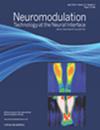Long-term Efficacy of Bilateral Globus Pallidus Stimulation in the Treatment of Meige Syndrome
IF 3.2
3区 医学
Q2 CLINICAL NEUROLOGY
引用次数: 0
Abstract
Objective
This study aimed to investigate the long-term efficacy and prognosis of bilateral globus pallidus internus (GPi) deep brain stimulation (DBS) in patients with benign essential blepharospasm (BEB) and complete Meige syndrome, and to search for the best therapeutic subregion within the GPi.
Materials and Methods
Data were collected for 36 patients with Meige syndrome who underwent bilateral GPi-DBS surgery at our hospital between March 2014 and February 2022. Using the Burk-Fahn-Marsden Dystonia Rating Scale (BFMDRS)-Movement (BFMDRS-M) and BFMDRS-Disability (BFMDRS-D), the severity of the symptoms of patients with complete Meige syndrome was evaluated before surgery and at specific time points after surgery. Patients with BEB were clinically evaluated for the severity of blepharospasm using BFMDRS-M, the Blepharospasm Disability Index (BDI), and Jankovic Rating Scale (JRS). Three-dimensional reconstruction of the GPi-electrode was performed in some patients using the lead-DBS software, and the correlation between GPi subregion volume of tissue activated (VTA) and symptom improvement was analyzed in patients six months after surgery. The follow-up duration ranged from six to 99 months.
Results
Compared with preoperative scores, the results of all patients at six months after surgery and final follow-up showed a significant decrease (p < 0.05) in the mean BFMDRS-M score. Among them, the average BFMDRS-M improvement rates in patients with BEB at six months after surgery and final follow-up were 60.3% and 69.7%, respectively, whereas those in patients with complete Meige syndrome were 54.5% and 58.3%, respectively. The average JRS and BDI scores of patients with BEB also decreased significantly (p < 0.05) at six months after surgery and at the final follow-up (JRS improvement: 38.6% and 49.1%, respectively; BDI improvement: 42.6% and 57.4%, respectively). We were unable to identify significantly correlated prognostic factors. There was a significant correlation between GPi occipital VTA and symptom improvement in patients at six months after surgery (r = 0.34, p = 0.025).
Conclusions
Our study suggests that bilateral GPi-DBS is an effective treatment for Meige syndrome, with no serious postoperative complications. The VTA in the GPi subregion may be related to the movement score improvement. In addition, further research is needed to predict patients with poor surgical outcomes.
双侧苍白球刺激治疗梅杰综合征的长期疗效。
研究目的本研究旨在探讨双侧苍白球内肌(GPi)脑深部刺激(DBS)对良性本质性眼睑痉挛(BEB)和完全性梅杰综合征患者的长期疗效和预后,并寻找GPi内的最佳治疗亚区:收集了2014年3月至2022年2月期间在我院接受双侧GPi-DBS手术的36名梅杰综合征患者的数据。使用Burk-Fahn-Marsden肌张力障碍评定量表(BFMDRS)-运动(BFMDRS-M)和BFMDRS-残疾(BFMDRS-D),在术前和术后特定时间点评估完全性梅杰综合征患者的症状严重程度。使用 BFMDRS-M、眼睑痉挛残疾指数(BDI)和扬科维奇评分量表(JRS)对 BEB 患者的眼睑痉挛严重程度进行临床评估。使用导联-DBS软件对部分患者的GPi电极进行了三维重建,并分析了术后6个月患者GPi亚区组织激活量(VTA)与症状改善之间的相关性。随访时间从 6 个月到 99 个月不等:与术前评分相比,所有患者术后 6 个月和最终随访结果均显示 BFMDRS-M 平均评分显著下降(P < 0.05)。其中,BEB患者术后6个月和最终随访时的BFMDRS-M平均改善率分别为60.3%和69.7%,而完全性梅杰综合征患者的改善率分别为54.5%和58.3%。术后六个月和最后随访时,BEB 患者的 JRS 和 BDI 平均得分也显著下降(P < 0.05)(JRS 改善了 38.6%,BDI 改善了 49.1%):JRS改善率分别为38.6%和49.1%;BDI改善率分别为42.6%和57.4%:分别为 42.6% 和 57.4%)。我们未能发现明显相关的预后因素。GPi 枕部 VTA 与术后 6 个月患者症状改善之间存在明显相关性(r = 0.34,p = 0.025):我们的研究表明,双侧 GPi-DBS 是治疗梅杰综合征的有效方法,术后无严重并发症。GPi亚区的VTA可能与运动评分的改善有关。此外,还需要进一步研究如何预测手术效果不佳的患者。
本文章由计算机程序翻译,如有差异,请以英文原文为准。
求助全文
约1分钟内获得全文
求助全文
来源期刊

Neuromodulation
医学-临床神经学
CiteScore
6.40
自引率
3.60%
发文量
978
审稿时长
54 days
期刊介绍:
Neuromodulation: Technology at the Neural Interface is the preeminent journal in the area of neuromodulation, providing our readership with the state of the art clinical, translational, and basic science research in the field. For clinicians, engineers, scientists and members of the biotechnology industry alike, Neuromodulation provides timely and rigorously peer-reviewed articles on the technology, science, and clinical application of devices that interface with the nervous system to treat disease and improve function.
 求助内容:
求助内容: 应助结果提醒方式:
应助结果提醒方式:


